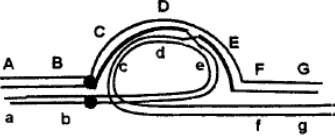#Question id: 9176
#Unit 9. Diversity of Life Forms
Wetlands are standing bodies of freshwater, just like lakes and ponds. However, wetlands are different from lakes and ponds because wetlands have ________.
#Question id: 9177
#Unit 9. Diversity of Life Forms
Which of the following statements regarding turnover in a lake is correct?
#Question id: 9178
#Unit 9. Diversity of Life Forms
A fish swimming into an estuary from a river would have which of the following as its greatest physiological challenge?
#Question id: 9179
#Unit 9. Diversity of Life Forms
Which of the following types of organisms is likely to have the widest geographic distribution?
#Question id: 9180
#Unit 9. Diversity of Life Forms
Which of the following statements can be accurately made about light in aquatic environments?
#Question id: 9181
#Unit 9. Diversity of Life Forms
Turnover of water in temperate lakes during the spring and fall is caused by which of the following?

